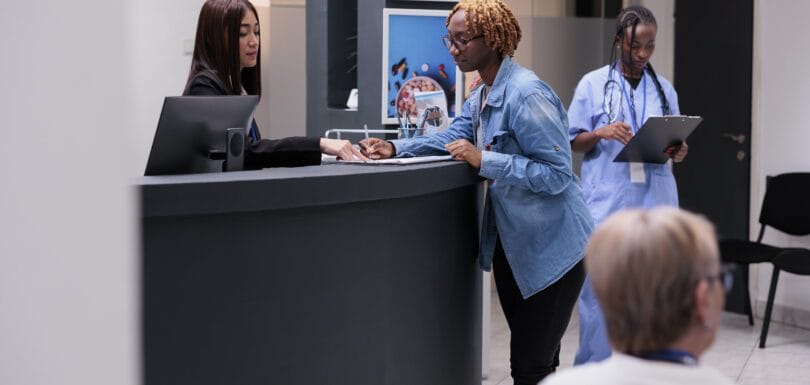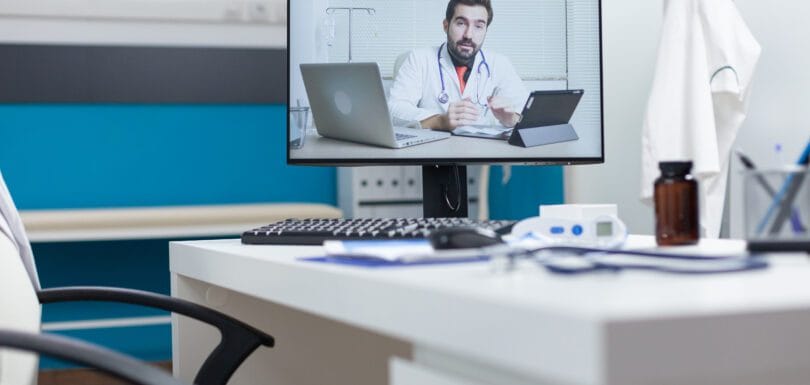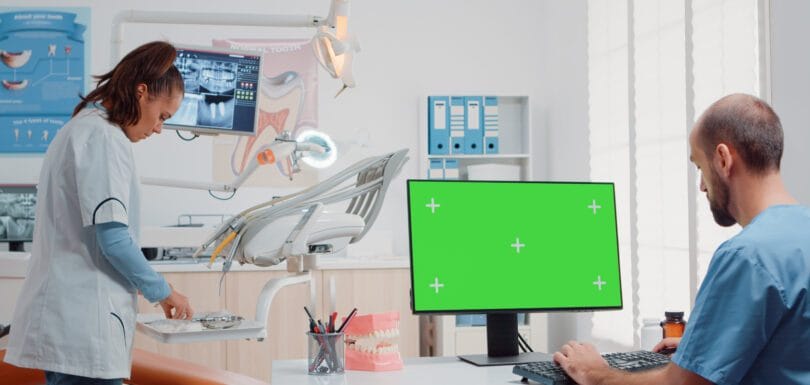Unlock Hope with a Breakthrough Virtual Front Desk Solution
Virtual Front Desk for Multisite Medical Practices Managing multisite medical practices is no small task it requires juggling patient satisfaction, staff productivity, and smooth administrative workflows every single day. That’s why many practices are turning to a Virtual Front Desk Solution to help keep everything running seamlessly across multiple locations. As healthcare organizations expand, the challenge of maintaining consistent communication and efficient operations only grows, making traditional approaches harder to sustain. Administrative staff often find themselves overwhelmed by nonstop calls, scattered appointment systems, and uneven patient check-ins. This constant strain reduces efficiency and takes a toll on both morale and patient care. Even small mistakes like missed appointments or billing glitches can ripple into bigger problems. This is exactly where a Virtual Front Desk Solution shines. By providing centralized support and reliable coordination, it helps ease the burden on busy teams and brings order to complex networks. When done right, it becomes the backbone of a scalable, modern medical practice. To make the system even more effective, many practices also choose to integrate a Virtual Patient Care Coordinator. This specialized role enhances communication between staff and patients, follows up on care plans, and ensures each patient journey is seamless across every location. Of course, no single fix works for everyone, especially in healthcare. That’s why the Virtual Front Desk model is customized to meet the unique needs of multisite clinics. It doesn’t just keep things ticking it restores harmony, boosts consistency, and lays the groundwork for future growth. What Is a Virtual Front Desk? Think of a Virtual Front Desk as your practice’s remote control center for all front-desk tasks. It’s a cloud-based administrative setup that performs the same core functions as an in-house team but with more consistency and flexibility. Instead of just a receptionist answering phones, you get a full-service team managing everything from appointment scheduling and patient communication to form intake and insurance verification. These virtual teams use real-time tech and automation tools to make sure no call is missed and every patient is attended to. And because they work remotely, they integrate directly into your practice’s daily operations without requiring extra office space, on-site hiring, or time-consuming training. If your practice is already using a Virtual Medical Office Assistant, you’ve likely seen benefits like quicker response times, fewer scheduling errors, and better patient communication. These assistants can handle rescheduling, prior authorizations, and insurance follow-ups effortlessly. They’re more than convenient—they’re reliable, responsive, and always ready. This setup is especially useful for practices with multiple locations. It reduces confusion, boosts professionalism, and keeps all your patient interactions HIPAA-compliant and consistently on-brand across the board. To learn how virtual front desks are transforming patient care across the country, check out this article by Clinic Mind that dives deeper into real-world results. Multisite Medical Practices: Unique Challenges Multisite practices face operational hurdles that single-location clinics rarely encounter. Managing multiple calendars, staff rosters, and patient data across various systems quickly becomes overwhelming. Communication silos can form, leading to misalignment between front desk teams at different locations. One common issue is inconsistency in patient experience. For example, a patient may receive exceptional service at one location and face delays or confusion at another. This inconsistency damages brand reputation and may reduce patient trust. Staff burnout is another serious concern. With multiple teams handling separate admin workloads, duplication of efforts and missed responsibilities are common. Moreover, training new staff at each site consumes time and resources. Integrating a Virtual Assistant for Medical Practice brings clarity to this chaos. Centralized scheduling, standardized workflows, and uniform communication protocols ensure that every location operates in harmony. A Virtual Assistant for Medical Offices also reduces hiring pressures by offering shared resources that serve multiple locations simultaneously. Ultimately, these challenges are not just technical they’re human. And solving them requires more than just software; it demands a flexible, Supportive and well-coordinated support system. 4. How a Virtual Front Desk Solution Solves Multisite Problems The Virtual Front Desk Solution was designed with the unique pain points of multisite clinics in mind. Here’s how it transforms the way medical practices function: Centralized Appointment Handling: Instead of each location managing its own booking, a virtual team can manage all appointments in one place. This improves accuracy and availability. Unified Patient Communication: Patients calling any location receive consistent, timely responses, no matter where the call is routed. This builds trust and enhances professionalism. Lower Administrative Costs: Practices avoid the overhead of hiring front desk staff at every site. A Virtual Assistant for Doctors Office manages tasks remotely, minimizing staffing expenses. HIPAA Compliance & Accuracy: All data is processed under strict compliance protocols, reducing the risk of errors or breaches. A Healthcare Virtual Assistant is trained to follow privacy laws diligently. Additionally, these assistants handle insurance verification, collect co-pays, and update patient records accurately. Whether you’re using a Medical Virtual Assistant Services or a Virtual Health Care Assistant, the benefits are immediate and measurable. For growing networks, a Healthcare Virtual Assistant Services model becomes a powerful backbone for scaling efficiently while preserving quality care. Features to Look for in a Virtual Front Desk When picking the right Virtual Front Desk for your multisite practice, focus on features that truly match your long-term needs. Choose solutions that make daily operations easier and fit smoothly into your workflow. Live Call Answering: Ensure your patients always reach a live person, even during high-volume hours. A Virtual Assistant for Family Medical Doctors adds a human touch without geographic limits. EMR/EHR Integration: Choose a solution that connects seamlessly with your electronic health record systems. This eliminates manual data entry and improves documentation. Insurance Verification: Real-time eligibility checks help reduce billing errors and speed up patient onboarding. Bilingual Support: Multisite practices in diverse regions benefit from assistants fluent in multiple languages. A Health Virtual Assistant can improve accessibility and comfort for non-English speakers. Dashboard Reporting: Transparency is key. Your virtual front desk should offer a centralized dashboard showing call volume, appointment stats, and response times across all sites.











